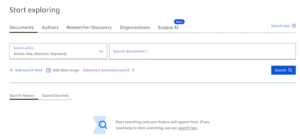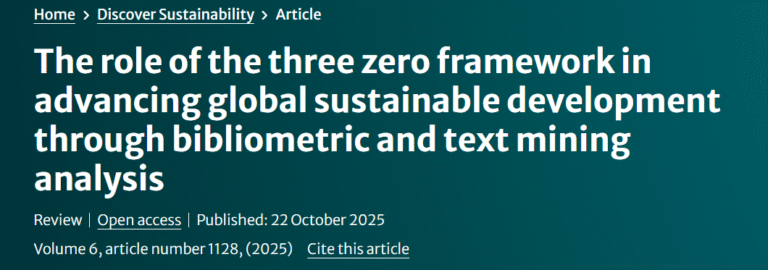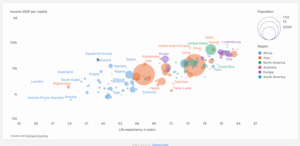In 2024, a team of researchers was curious about the growing buzz around the digital ecosystem in entrepreneurship. They didn’t want to just skim a few articles, rather they wanted a bird’s-eye view of the depth of topic exploration: Who are the leading or influential authors, institutions or publishers? What journals publish the most? Which keywords are gaining most attention or what are the emerging topics that might bring opportunity to further explore in the academic arena? To answer these questions, they didn’t conduct surveys or interviews. They turned to bibliometric analysis based on previous relevant literature.
This wasn’t just a shortcut roadmap of conducting or writing a paper. It was a structured, systematic, data-driven method to map the existing knowledge. In a world where thousands of papers are published every month, bibliometric analysis helps researchers cut through the noise and discover meaningful patterns.
Therefore, If you’re in the field of business or social sciences and you want to identify trends, find research gaps, or support your PhD thesis with strong evidence, this method is a goldmine.
What Is Bibliometric Analysis?
Bibliometric analysis refers to the statistical and network-based analysis of published academic literature. It uses metadata like author names, citations, keywords, and publication sources to:
- Track the evolution of research themes
- Identify influential works, journals, or scholars
- Visualize collaborations and thematic clusters
It’s like doing analytics on academic literature where scientific databases are used as evidence. If you think of it as the Google Maps for academic research. You see the highways (popular topics), rest stops (seminal works), and even detours (emerging trends or gaps).
See the latest trend on which countries are on top in google search about bibliometric topics. It clearly shows the high interests among Chinese researchers.
Why Use It in Business Management Research?
Business management is a fast-moving, interdisciplinary field. From AI-driven HR systems to greenwashing in marketing, digital innovation in business sectors, new themes emerge each year. Following are the things you can take from bibliometric analysis:
Discover Emerging Themes/Topics
In a 2024 study using Scopus, researchers found that terms like “digital platforms, innovation ecosystem”, and “blockchain technology in entrepreneurship” exploded in topic modeling and bibliometric methods. This indicated a shift in academic focus toward digital innovation and technological innovation in business entrepreneurs.
Recognize Top Contributors
Want to publish in high-impact venues or collaborate with key academics? Bibliometric analysis shows who’s publishing the most and where. For example, a co-authorship analysis on corporate sustainability showed that researchers from Australia, USA dominated the field, with the Journal of Small Business Economics and Journal of Technology Transfer being a top-cited source.
Strengthen Systematic Reviews
PhD candidates often struggle with defining a solid literature base. Bibliometric mapping complements narrative reviews by making them more objective. You can visually show how your topic evolved over time. This can be an excellent addition to your literature chapter.
Spot Geographical Patterns
As it can be seen the image was created from biblioshiny and customized the word map to understand the geographical distribution of the domain. Most developed countries in Europe and America outperformed in research contributions while the developing Africa and Asian nations showed limited outputs due to funding, infrastructural and cultural constraints.
Refer to my latest research on this method here:
Digital entrepreneurship ecosystems: Then vs. now-a future perspectives
Types of Bibliometric Techniques (with Simple Examples)
1. Performance Analysis
- What it does: Measures productivity (e.g., publication and citation counts). Mostly, these are descriptive analyses.
- Example: “Top 10 most cited authors/journals/institutions in any domain.
Explore more on how you can do these analysis here:
Addressing poverty through social entrepreneurship for sustainable development: a comprehensive bibliometric analysis
2. Science Mapping
Visualizes relationships between items. Main techniques include:
- Co-citation analysis: Which authors or papers are cited together?
Eg: Porter and Kramer (2006) and Carroll (1999) are often co-cited in CSR literature. - Bibliographic coupling: Which papers cite the same sources?
Eg: Two 2023 papers on stakeholder engagement may share 80% references. - Co-word analysis: Which keywords appear together?
Eg: “supply chain transparency” + “blockchain” often cluster together in recent years. - Co-authorship analysis: Who works with whom, and how strong are their ties?
Eg: Researchers from Denmark and the Netherlands show strong collaboration on green finance.
Where to Get Your Data
Best Databases: There are premium and open sources databases that can be used for exploring this method.
- Scopus: Broad, business-friendly, great for network analysis.
- Web of Science (WoS): Stable metadata, ideal for historical trends.
- Dimensions: Has grant and patent data—great for innovation studies.
- Google Scholar: Useful but harder to clean and filter.
For business management, Scopus and WoS is often preferred due to its wide journal coverage.
Tools You Can Use
You don’t need to be a coder to do bibliometric analysis. Here are the go-to tools:
| Tool | Use Case | User Level |
| VOSviewer | Visualizing co-authorship, keywords | Beginner |
| Bibliometrix (R) | Full pipeline with stats | Intermediate |
| CiteSpace | Detecting research frontiers | Advanced |
| Excel + Tableau | Custom visualizations | Intermediate |
| Python + Gephi | Deep custom analytics | Expert |
Challenges to Be Aware Of While Conducting Bibliometric Study
- Citation Bias: More famous authors get cited more—not always because of quality.
- Database Coverage: Not all journals are indexed equally across databases.
- Field Variance: Citation behaviors differ across business subfields (e.g., finance vs. organizational behavior).
Conclusion
Bibliometric analysis isn’t just for data nerds. It’s for any researcher who wants to make smarter, evidence-based decisions. Whether you’re mapping the literature for your thesis, scoping a new research idea, or writing a journal article or review paper, this technique offers the lens to see the bigger picture.
Ready to dive deeper? Follow my research works on bibliometric and systematic reviews on different approaches.





